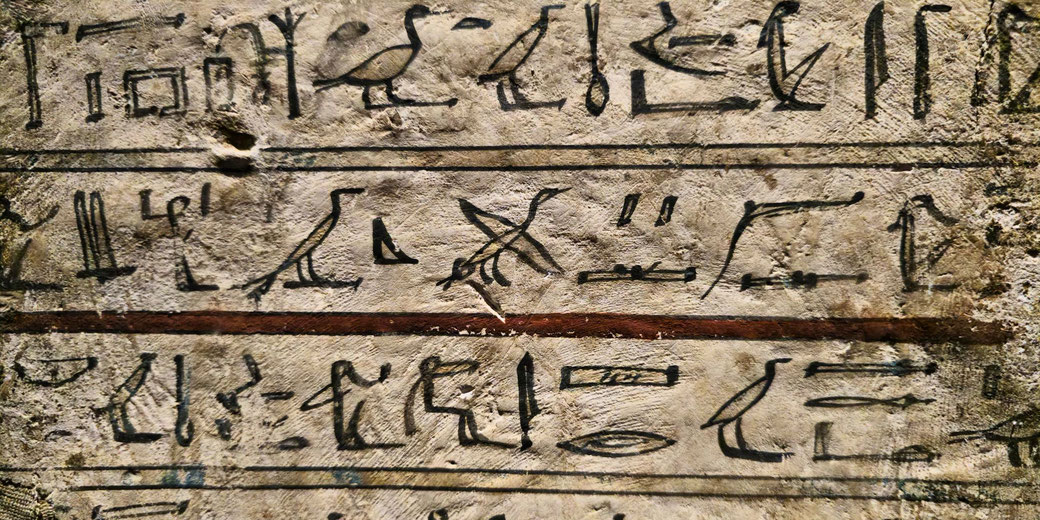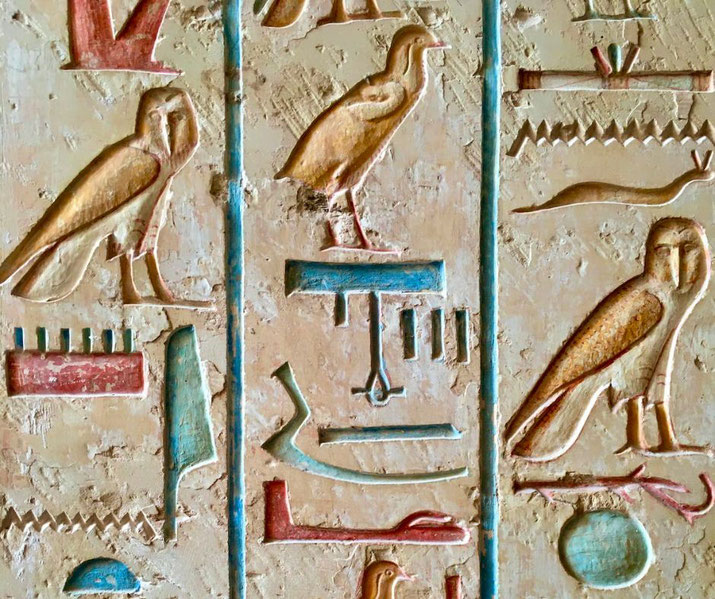How do Egyptian hieroglyphs work?

Prepare to embark on a captivating journey through time as we venture into the cryptic yet intriguing world of Egyptian hieroglyphs.
These enigmatic symbols, painted and carved on the sacred walls of ancient tombs and temples, have long whispered the secrets of a civilization that thrived thousands of years ago.
Yet, what do these symbols mean?
How did scholars decipher their complex structure to reveal the stories they hold?
How can you, too, begin to understand and even read these ancient Egyptian inscriptions?
Understanding hieroglyphs
Egyptian hieroglyphs are a system of writing used by the ancient Egyptians that combine logographic, syllabic, and alphabetic elements.
They were used continuously for over 3,000 years, from around 3100 BCE during the Early Dynastic Period to the 4th century CE.
Unlike English, which is read from left to right, hieroglyphs can be written in rows or columns and can be read from right to left or left to right, depending on the direction that the figures are facing.
The Rosetta Stone, discovered in 1799 near the town of Rosetta (modern-day Rashid) in Egypt, provided the key to decoding hieroglyphs with its trilingual inscription in Greek, Demotic, and hieroglyphic scripts.
Using this stone, French linguist Jean-François Champollion was finally able to decipher the hieroglyphs in 1822.
The basic elements of hieroglyphs
Egyptian hieroglyphs are composed of three types of signs: phonograms, logograms, and determinatives.
Phonograms are signs that represent sounds, much like letters in the English alphabet.
They can be monoliterals, representing one consonant; biliterals, representing two consonants; or triliterals, representing three consonants.
Logograms are signs that represent words or morphemes, akin to icons in modern visual language.
An example is the hieroglyph of an owl, which represents the sound "m", but when used as a logogram, it stands for the word "owl".
Determinatives are signs that provide further information about the words they accompany.
They do not have a phonetic value but give context to the word. For instance, a determinative of a man next to a word may indicate that the word has something to do with a man or men.

How to read hieroglyphs
Reading hieroglyphs requires some understanding of the context, ancient Egyptian culture, and the visual language that the Egyptians used. Here are a few basic steps to get you started:
Identify the direction of the text:
Look at which direction the characters are facing. If they're facing towards the right, you start reading from the right. If they're facing towards the left, you start from the left. In vertical columns, read from top to bottom.
Identify the phonograms:
Start by recognizing the monoliterals as they're the simplest. There are 24 of them in total.
Identify the logograms:
They usually represent the object they look like. They might be followed by a stroke which signifies that the hieroglyph should be read as a logogram.
Look out for determinatives:
They won't be vocalized when reading out the hieroglyphs, but they're crucial to understanding the context of the sentence.
Identify biliteral and triliteral signs:
These are harder to recognize due to their more abstract nature. As your proficiency grows, you'll be able to identify and understand them better.
This is just the very basics of learning how to read ancient Egyptian writing. If you'd like to dig deeper, here are the best resources I have used:
- How to Read Egyptian Hieroglyphs: A Step-by-Step Guide to Teach Yourself by Mark Collier and Bill Manley
Understanding Egyptian hieroglyphs is a journey that requires patience, dedication and, above all, curiosity.
While there is much more to explore, the basics provided here will give you a strong foundation to build upon.
What do you need help with?
Download ready-to-use digital learning resources
Copyright © History Skills 2014-2025.
Contact via email
With the exception of links to external sites, some historical sources and extracts from specific publications, all content on this website is copyrighted by History Skills. This content may not be copied, republished or redistributed without written permission from the website creator. Please use the Contact page to obtain relevant permission.





